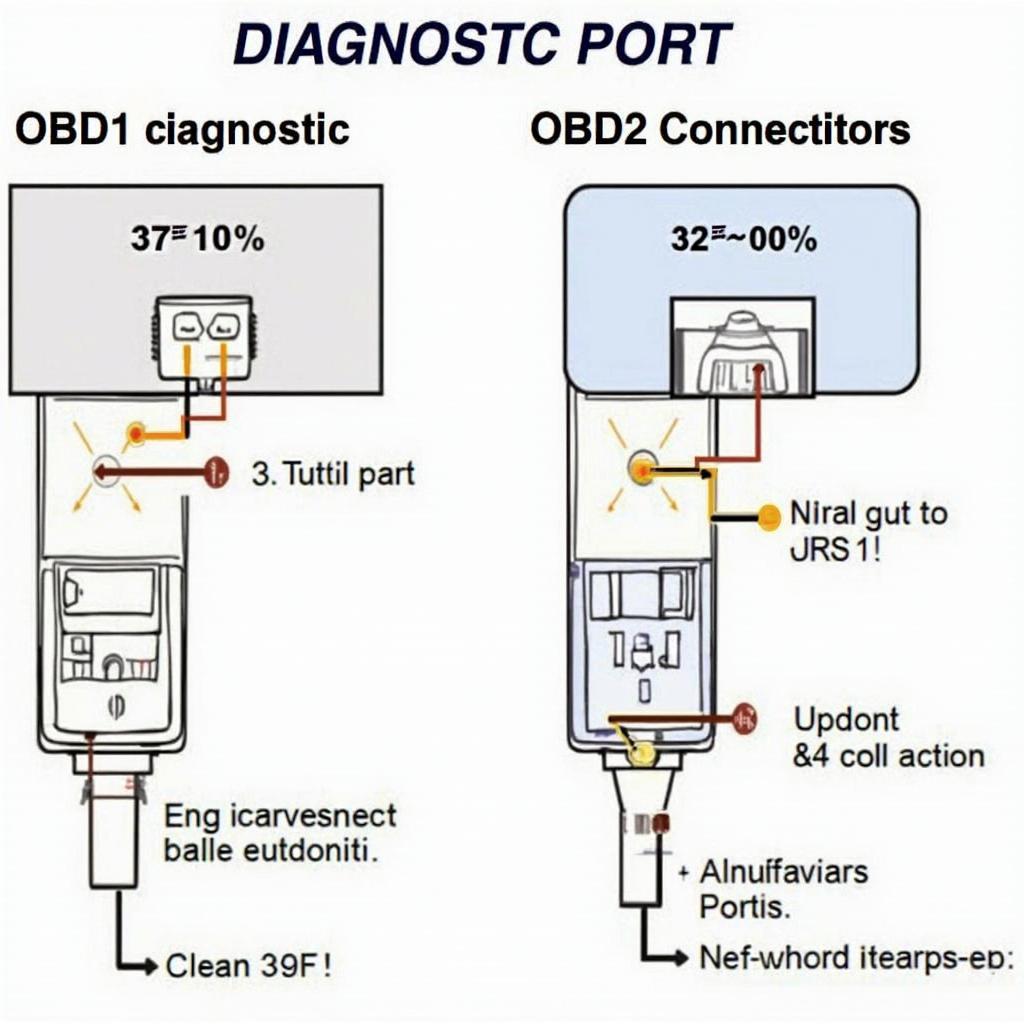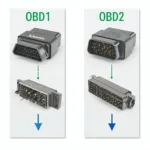Understanding the differences between OBD1 and OBD2 systems in a Ford 2.3L engine is crucial for effective diagnostics and repairs. This article dives into the key distinctions between these two systems, focusing on the Ford 2.3L engine, and provides valuable insights into their respective diagnostic procedures.
Understanding OBD1 in Ford 2.3L
OBD1, or On-Board Diagnostics Generation One, in the Ford 2.3L was a relatively basic system compared to its successor. It primarily relied on self-tests and rudimentary codes to identify issues. These codes were often manufacturer-specific, requiring specialized equipment or manuals for interpretation. The system monitored a limited number of parameters, focusing primarily on emissions-related components. Diagnosing problems in an OBD1 Ford 2.3L often involved checking vacuum lines, sensors, and using a code reader specific to Ford.
Common Issues with OBD1 Ford 2.3L
Common issues in OBD1 Ford 2.3L engines frequently revolved around faulty sensors, vacuum leaks, and ignition problems. These issues often manifested as poor fuel economy, rough idling, and decreased performance. Pinpointing the exact cause often required a methodical approach, testing individual components and systematically eliminating potential culprits.
OBD2 Ford 2.3L: A Leap Forward in Diagnostics
OBD2, implemented in Ford 2.3L engines starting in 1996, revolutionized automotive diagnostics. It standardized diagnostic trouble codes (DTCs) and introduced a universal connector, making it easier for technicians and DIYers to diagnose problems. OBD2 systems monitor a wider range of parameters, providing a more comprehensive view of the engine’s health. This advanced system allows for more precise diagnostics and facilitates quicker repairs.
Benefits of OBD2 in Ford 2.3L
OBD2 in the Ford 2.3L offers numerous benefits, including improved emissions monitoring, enhanced diagnostic capabilities, and easier access to diagnostic information. The standardized DTCs make it simple to understand the nature of a problem, while the readily available scanners empower car owners to perform basic diagnostics themselves.
OBD1 Ford 2.3L vs. OBD2 Ford 2.3L: A Direct Comparison
| Feature | OBD1 Ford 2.3L | OBD2 Ford 2.3L |
|---|---|---|
| Diagnostic Connector | Manufacturer-specific | Standardized (16-pin) |
| Diagnostic Trouble Codes | Manufacturer-specific | Standardized (DTCs) |
| Data Monitoring | Limited | Extensive |
| Diagnostic Tools | Specialized equipment | Widely available scanners |
| Ease of Use | More complex | User-friendly |


“The transition to OBD2 was a game-changer,” says John Smith, a seasoned automotive technician with over 20 years of experience. “It streamlined diagnostics and made troubleshooting much more efficient.” Another expert, Jane Doe, an automotive engineer, adds, “OBD2’s standardized codes significantly reduced the time and effort required to identify and resolve engine issues.”
Conclusion: Embracing the Advantages of OBD2 in Your Ford 2.3L
The evolution from OBD1 to OBD2 in the Ford 2.3L represents a significant advancement in automotive diagnostics. OBD2’s standardized codes, universal connector, and extensive data monitoring provide a more efficient and user-friendly diagnostic experience. While understanding OBD1 is essential for working on older vehicles, the advantages of OBD2 make it a vital tool for any Ford 2.3L owner. Do 1994 rangers have obd2 port?
FAQ
- What year did Ford 2.3L engines switch to OBD2? (1996)
- Where is the OBD2 port located in a Ford 2.3L? (Typically under the dashboard on the driver’s side)
- Can I use an OBD2 scanner on an OBD1 Ford 2.3L? (No, you need a specific OBD1 code reader.)
- What are some common OBD2 codes for a Ford 2.3L? (P0171, P0300, P0420 are a few examples.)
- How can I clear OBD2 codes on my Ford 2.3L? (Using an OBD2 scanner or by disconnecting the battery.)
- What are the benefits of using an OBD2 scanner? (Faster diagnostics, more detailed information, and potential cost savings.)
- Where can I find more information about OBD2 codes? (Online resources, repair manuals, and automotive forums.)
Need help with your car diagnostics? Contact us via WhatsApp: +1(641)206-8880, Email: [email protected] or visit us at 789 Elm Street, San Francisco, CA 94102, USA. Our 24/7 customer support team is ready to assist you.
